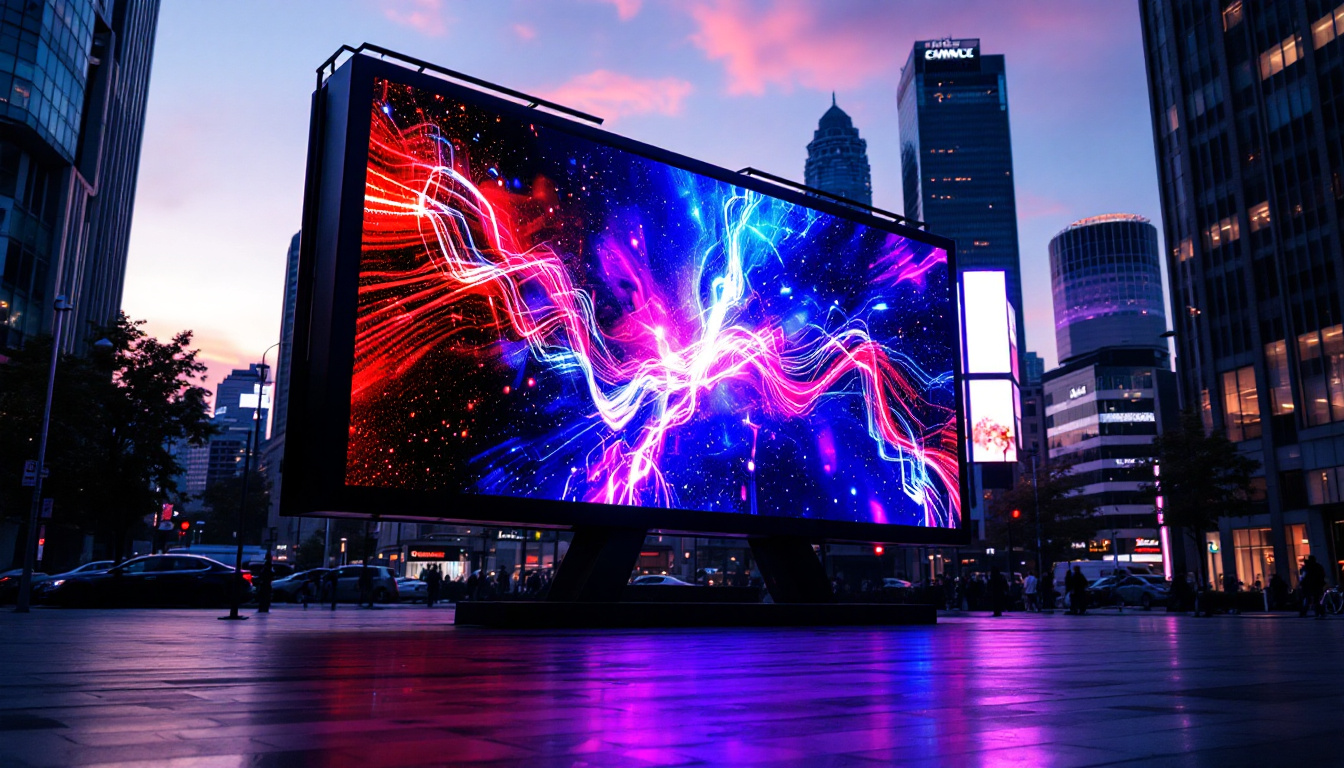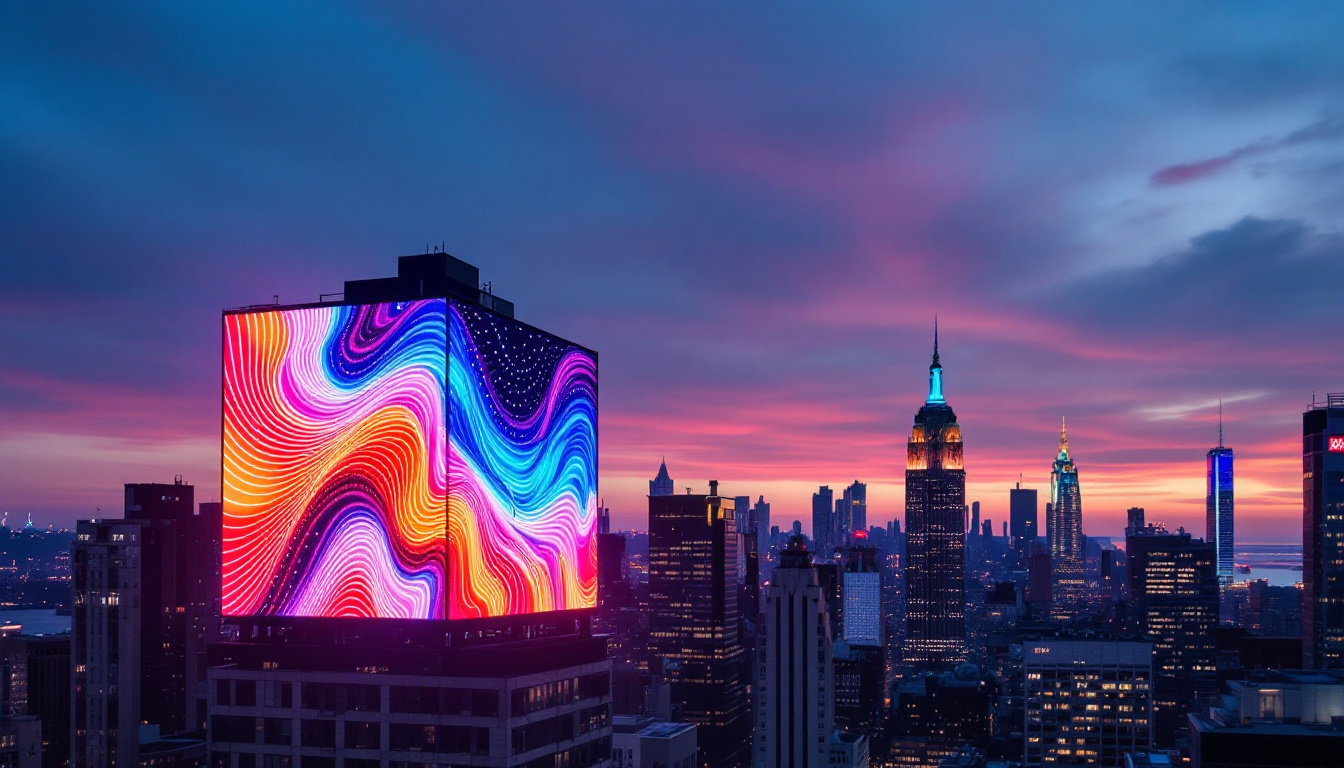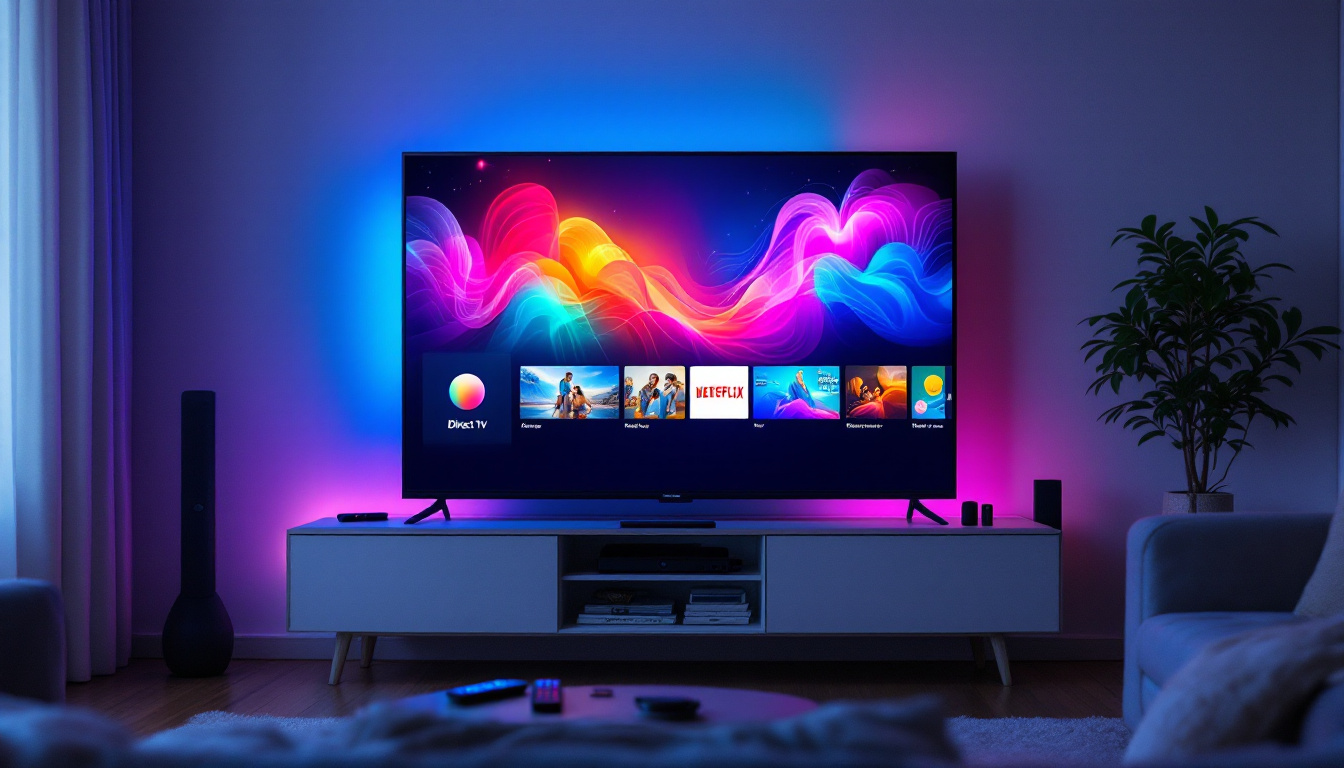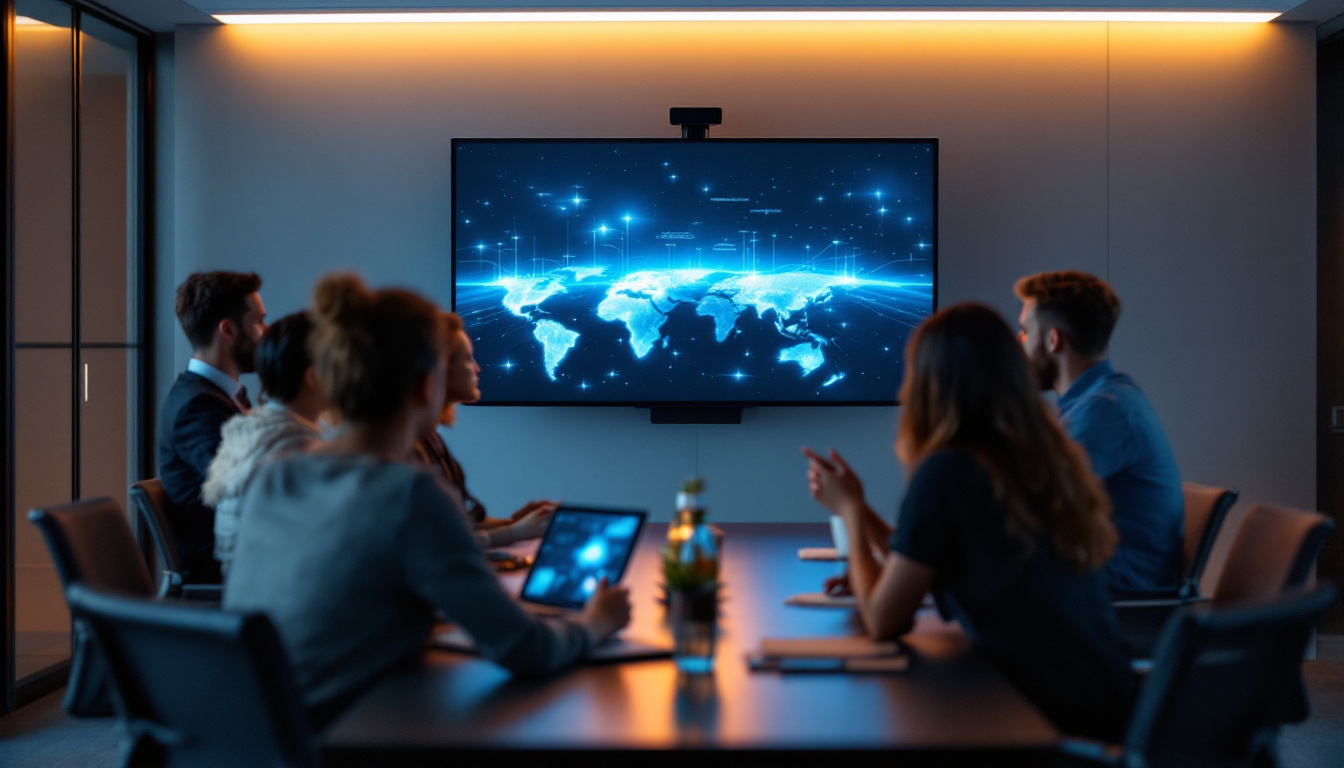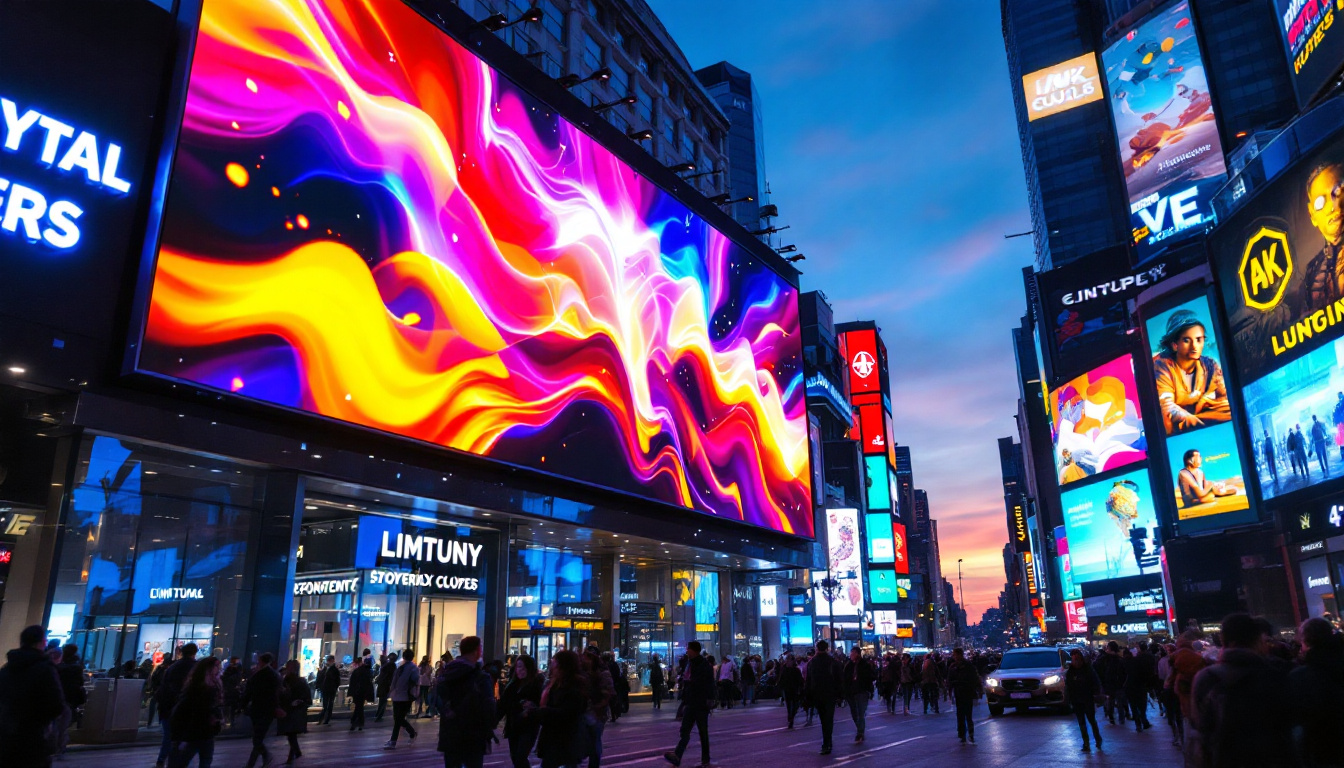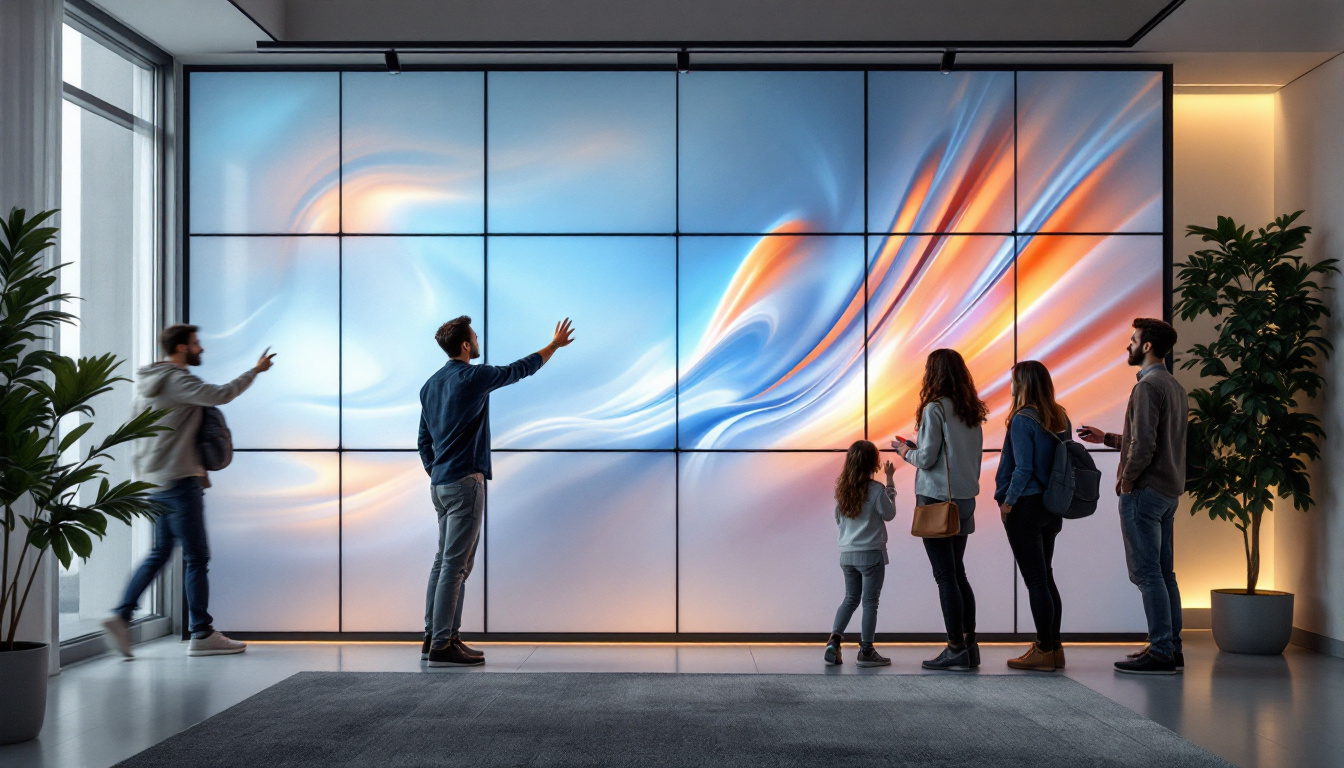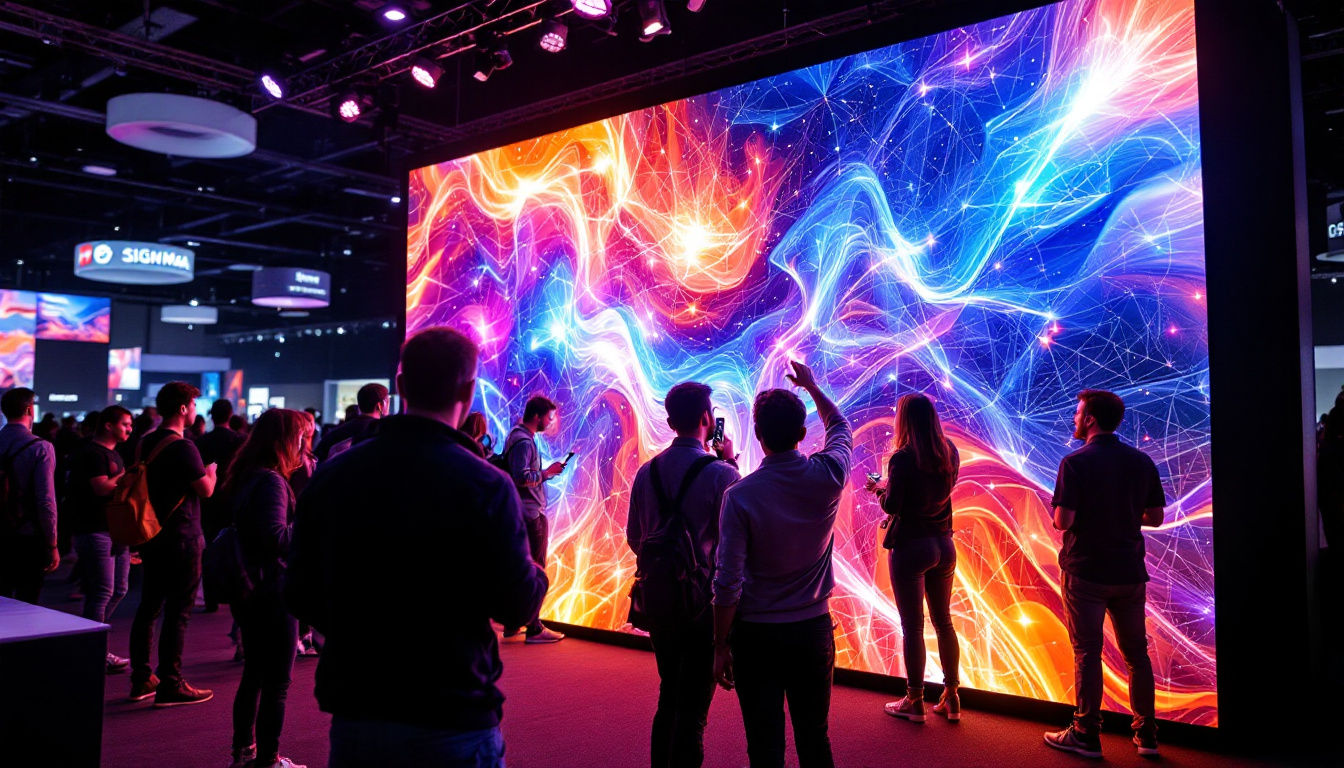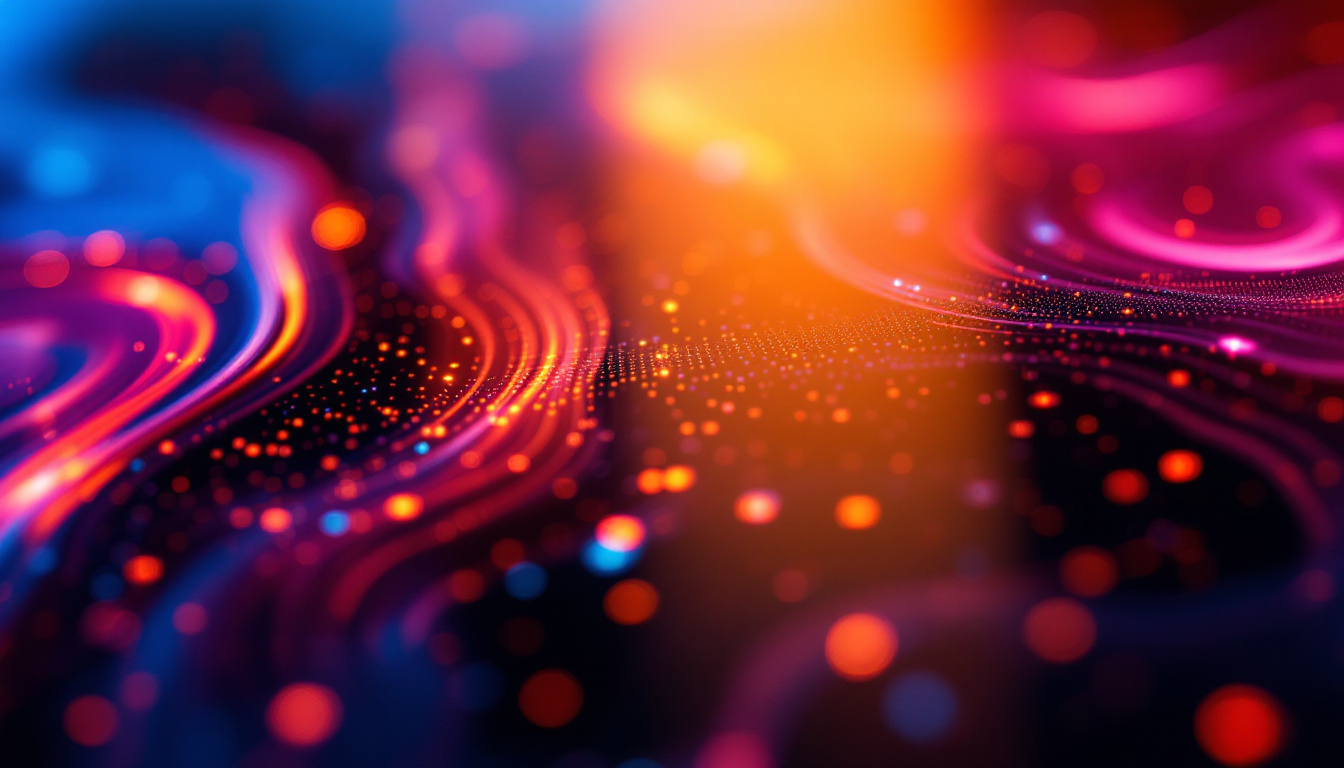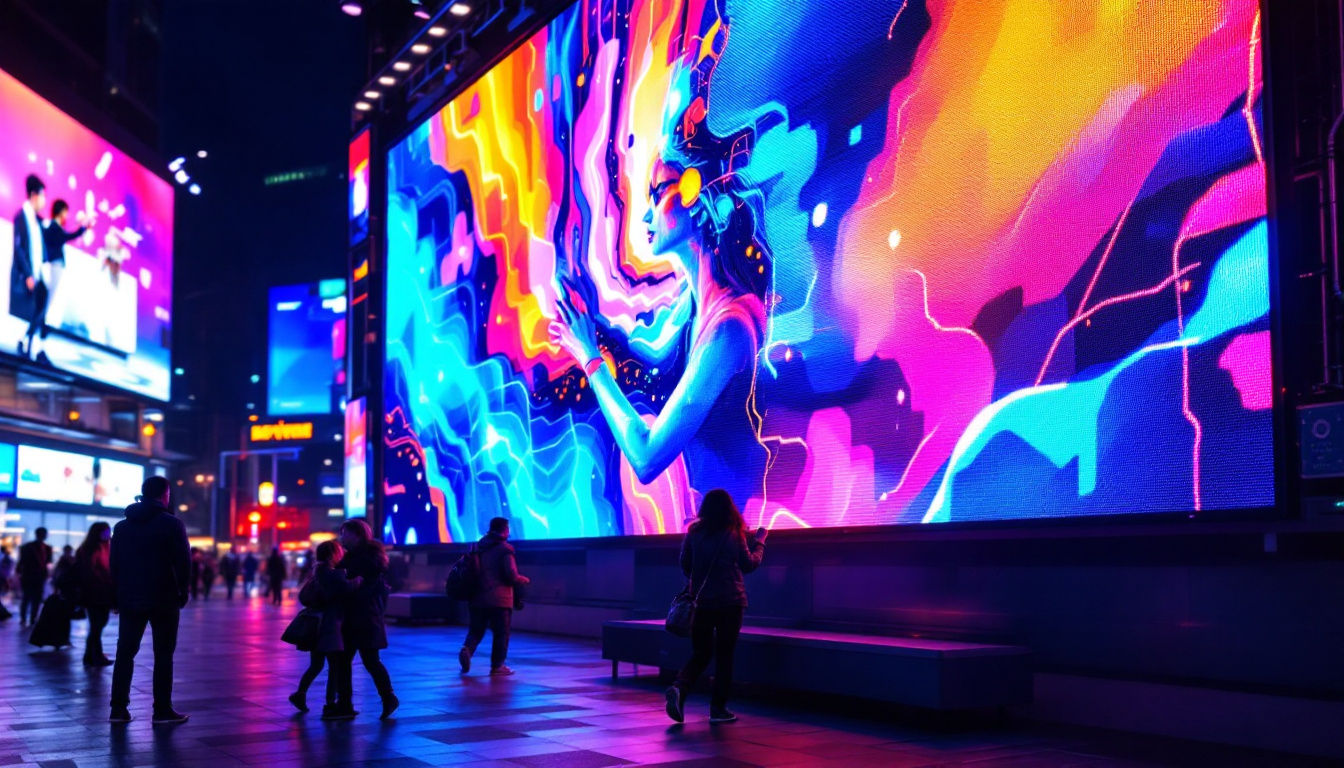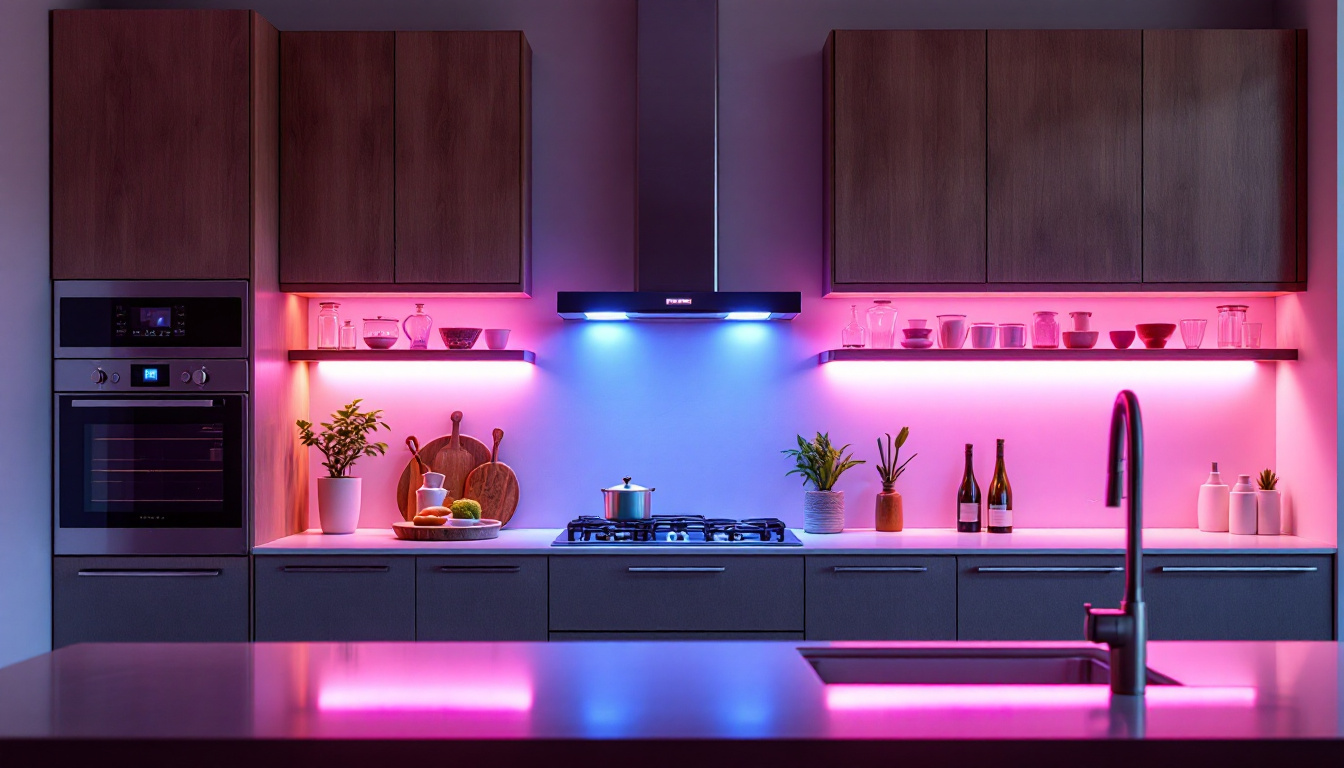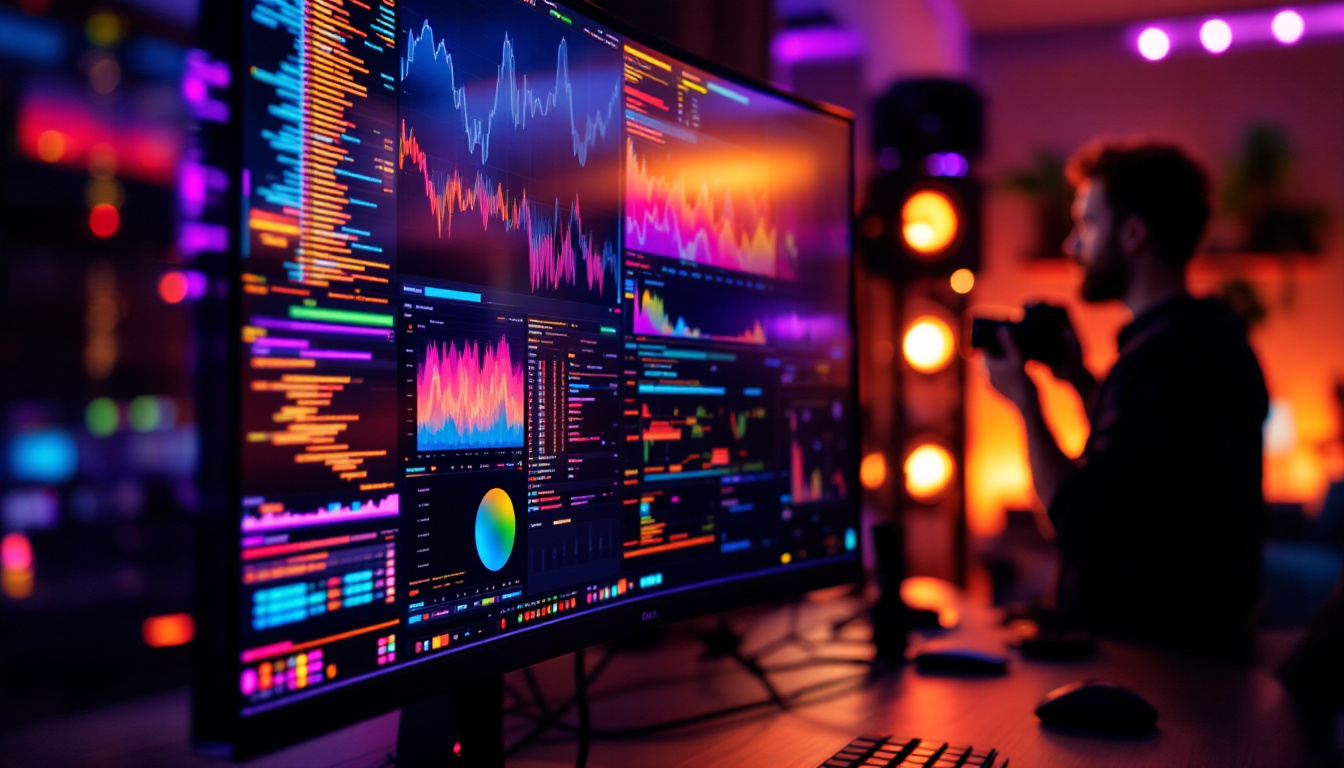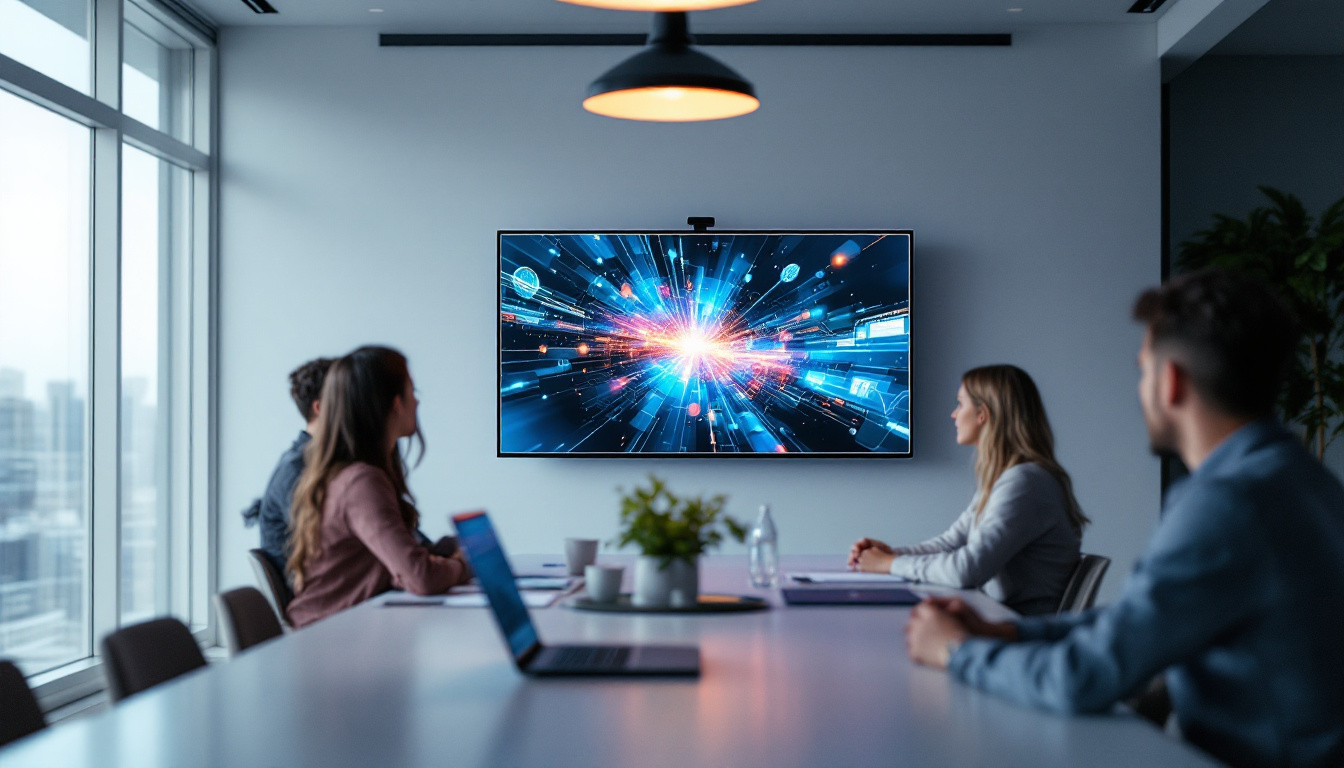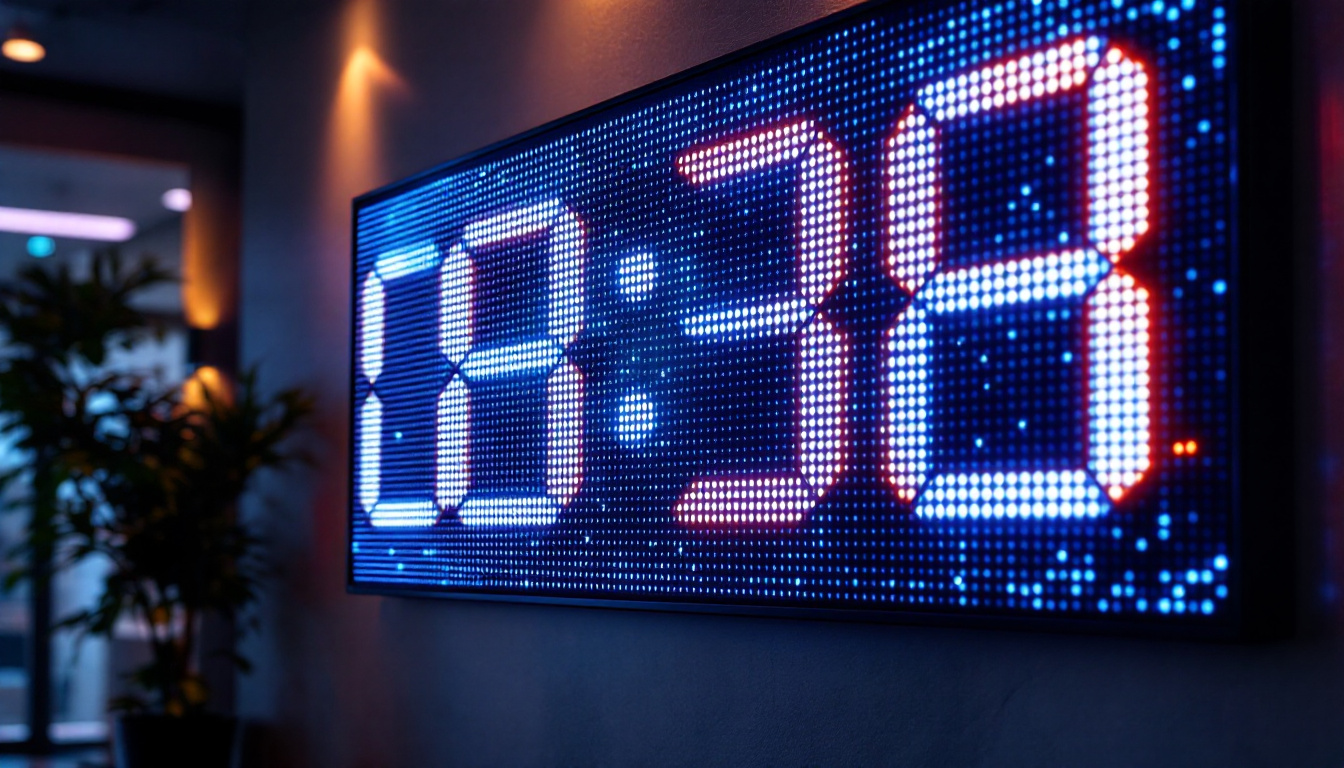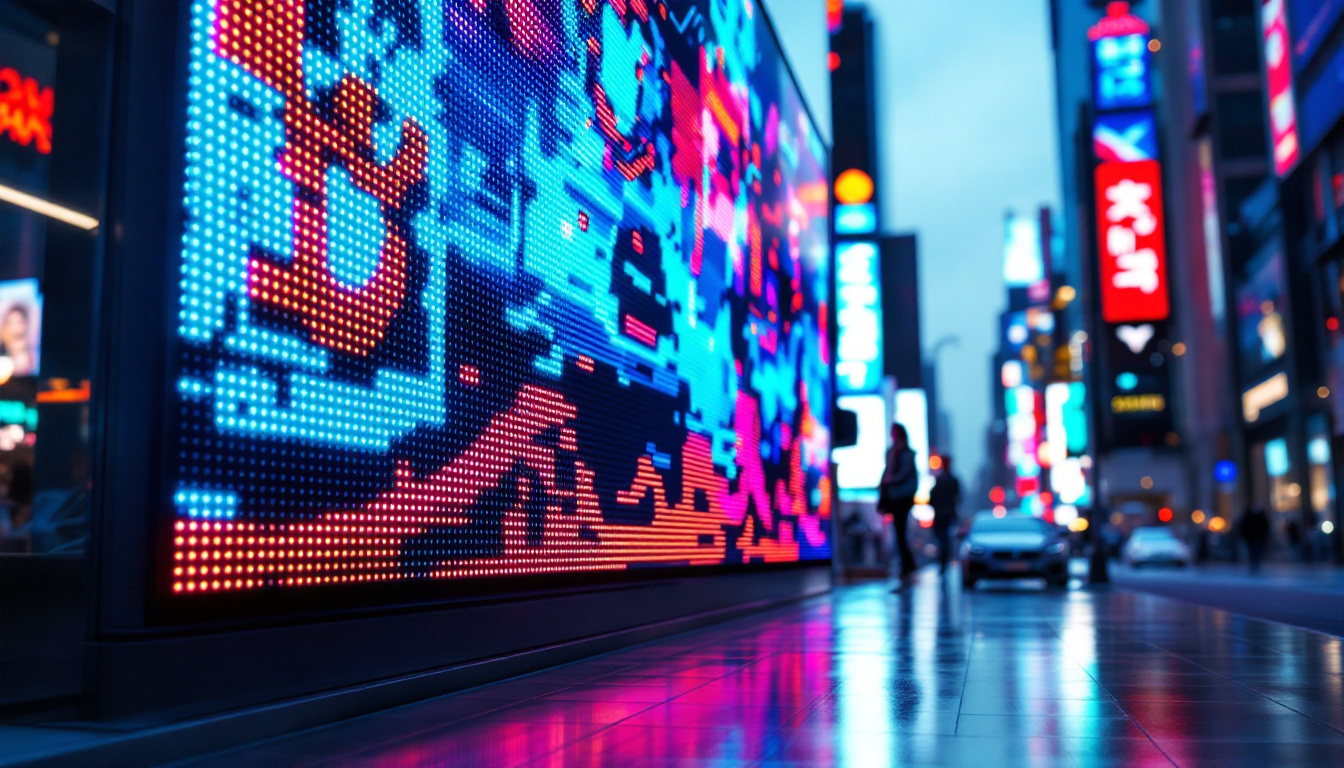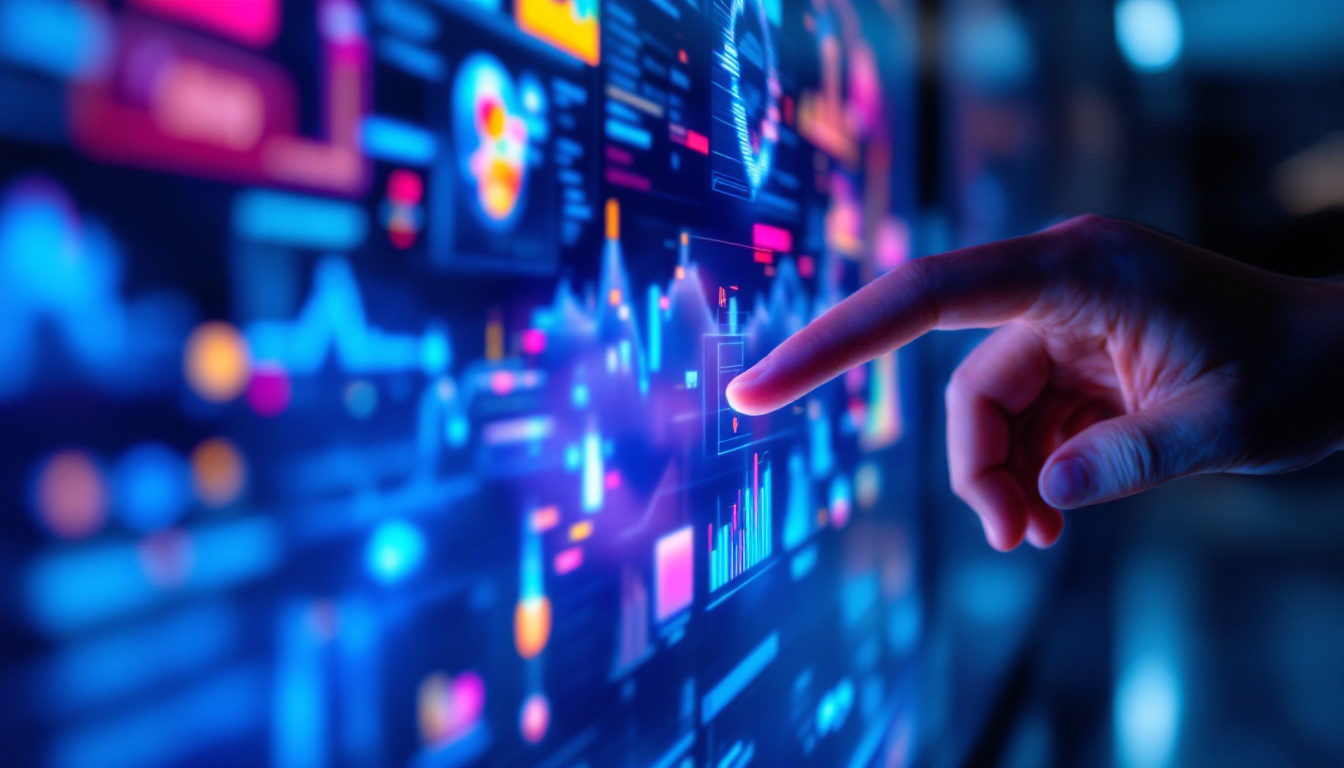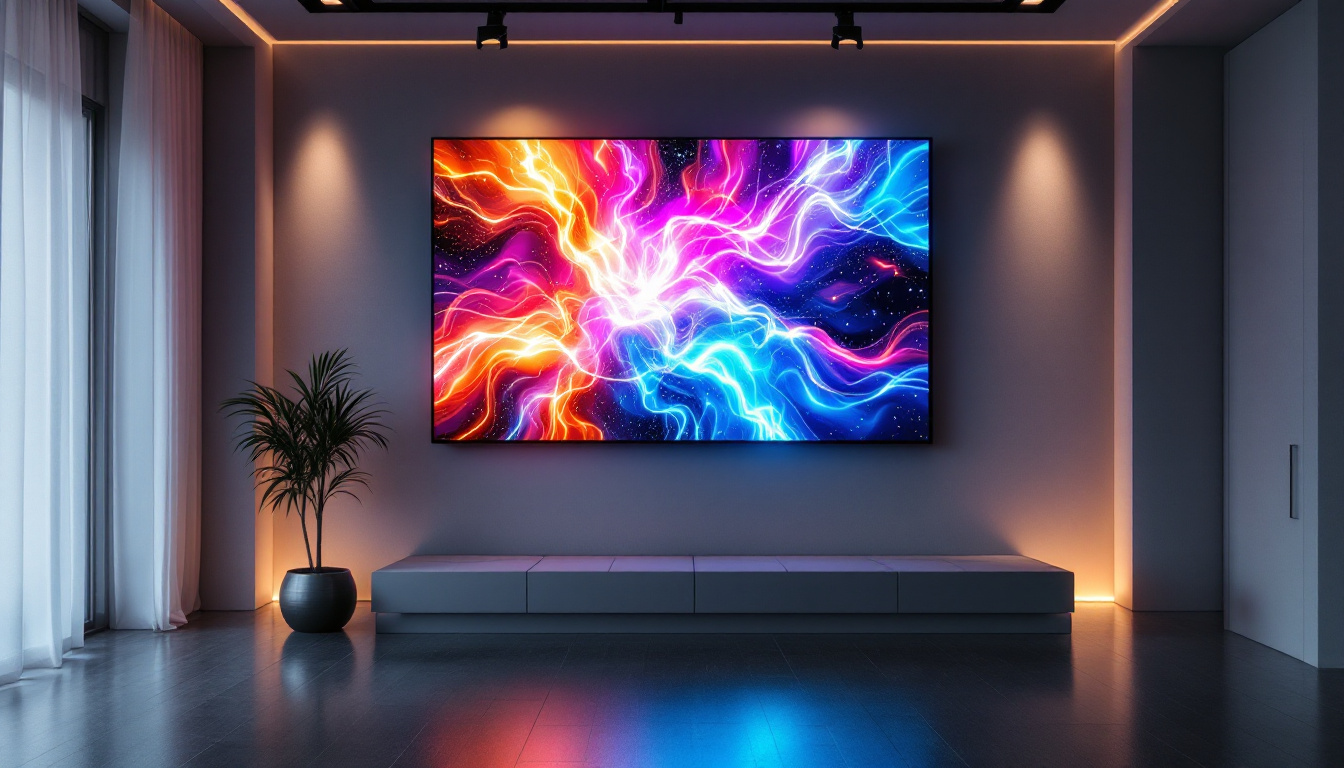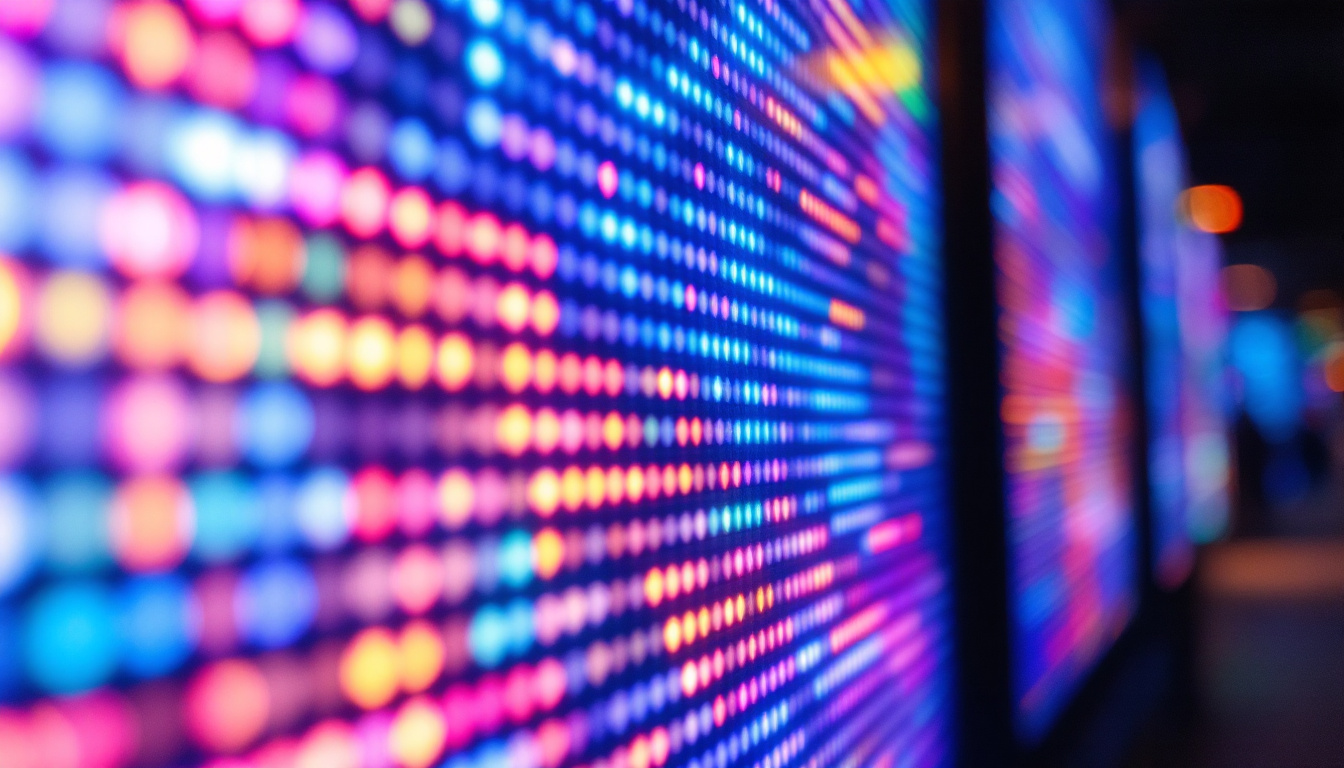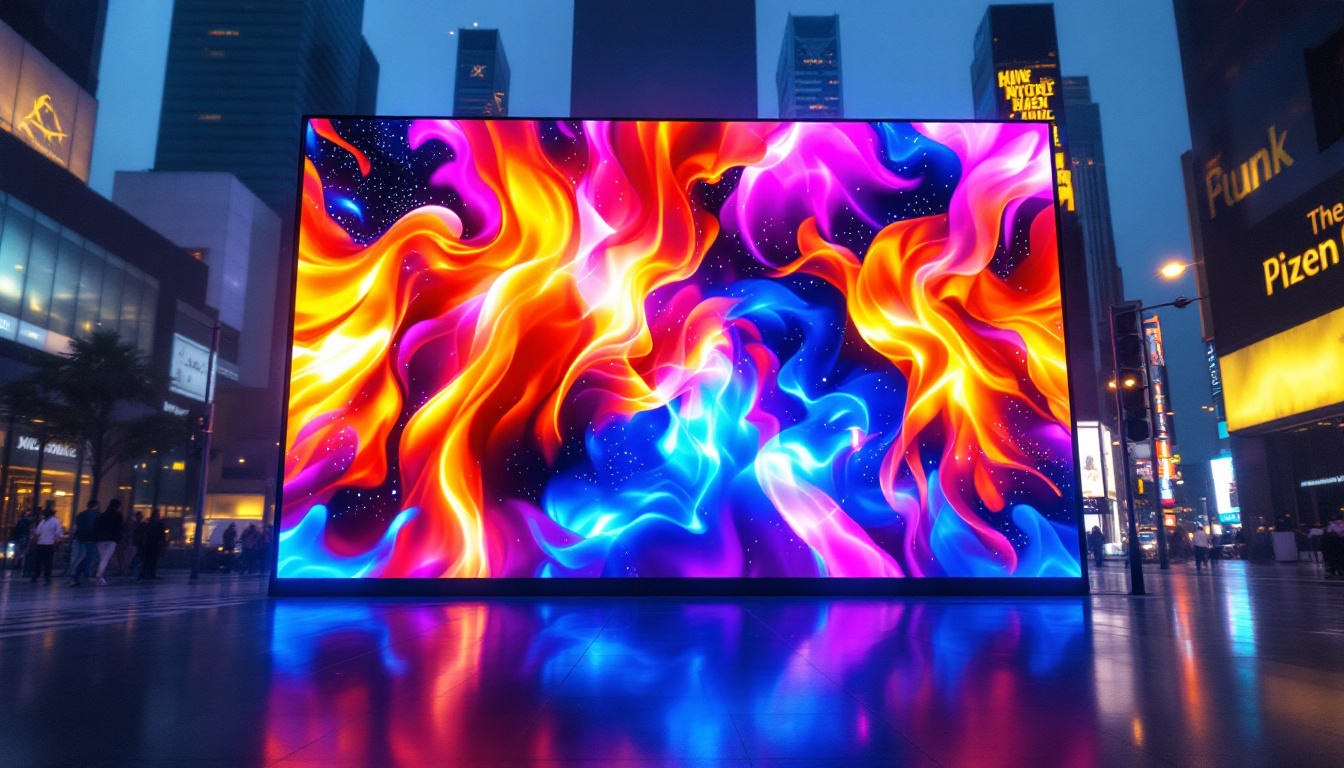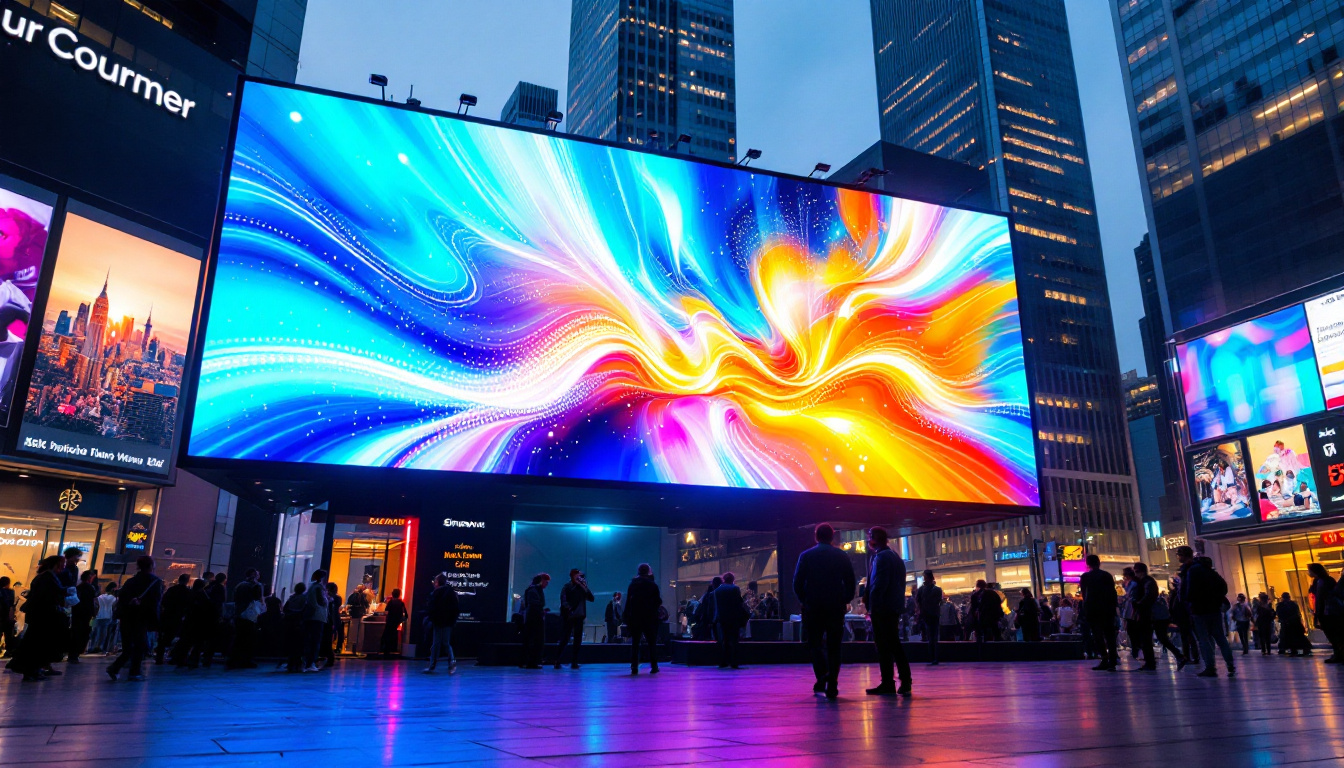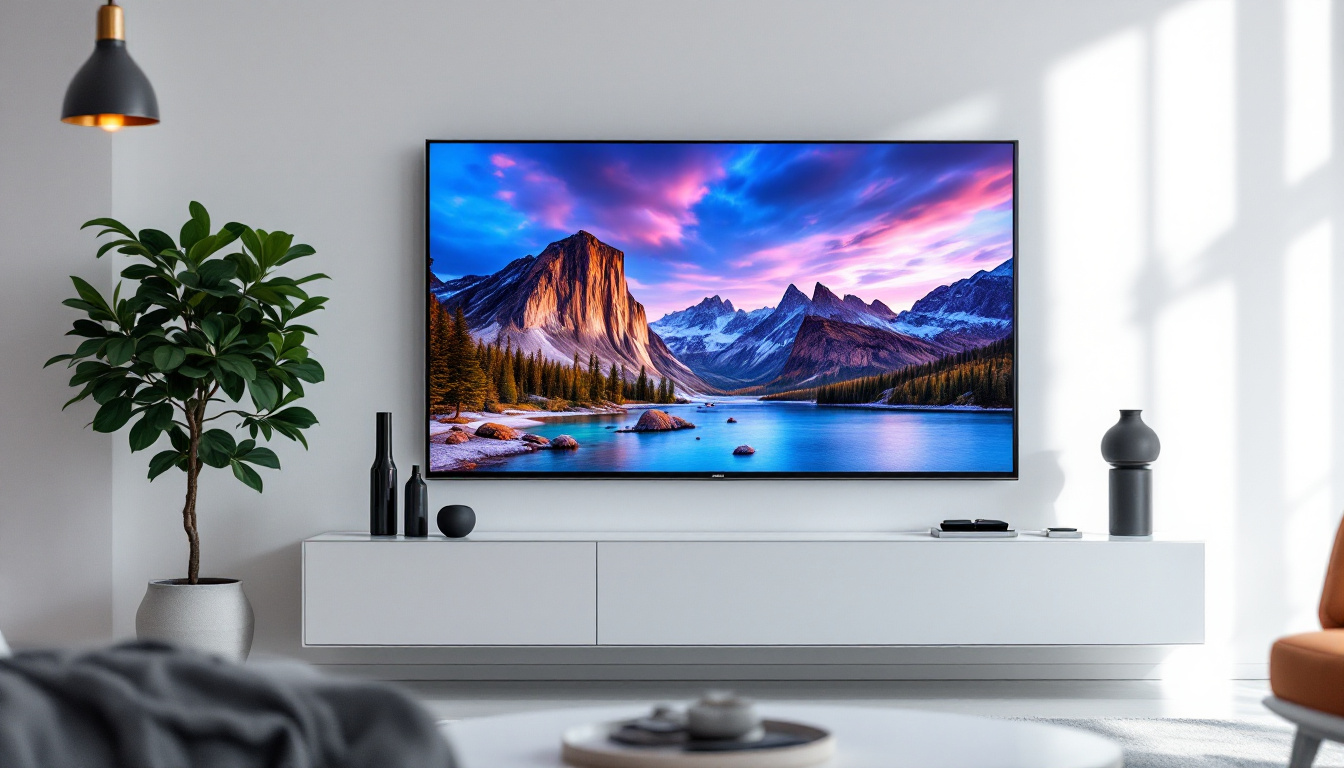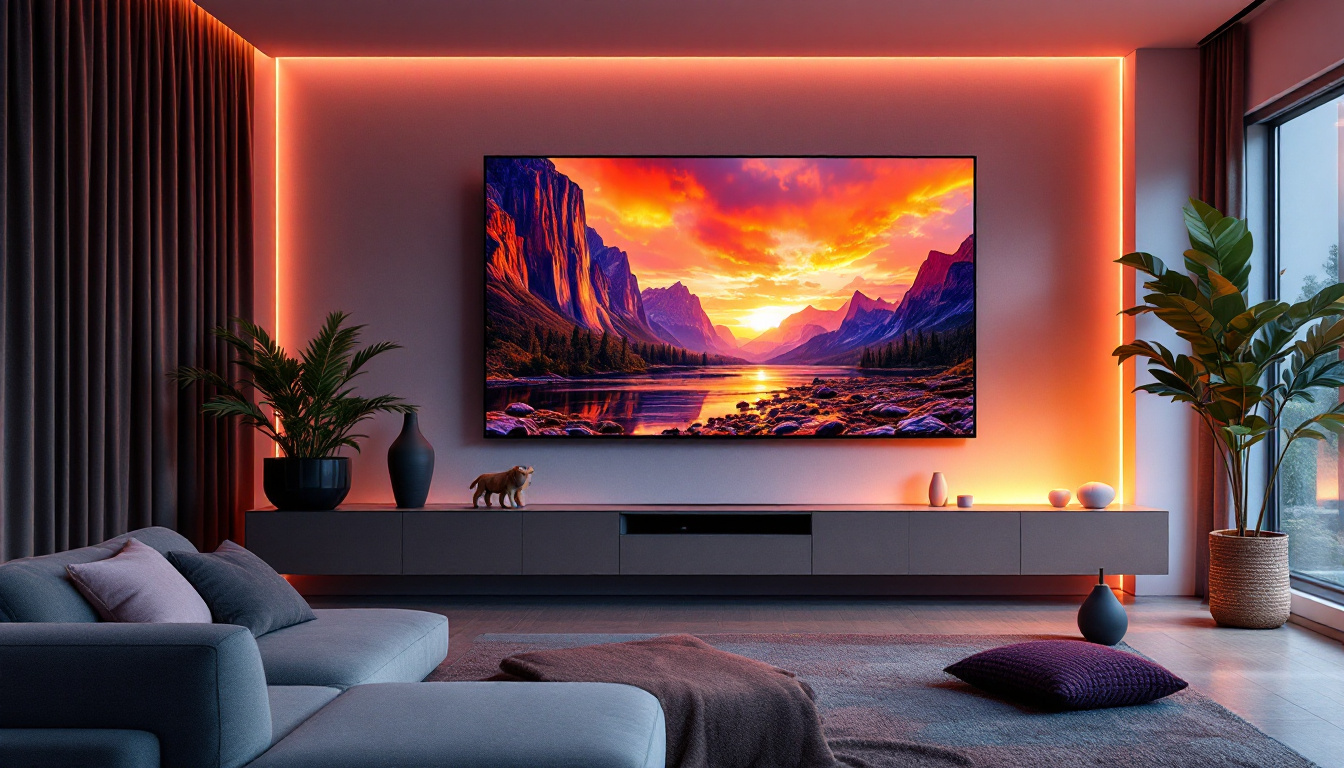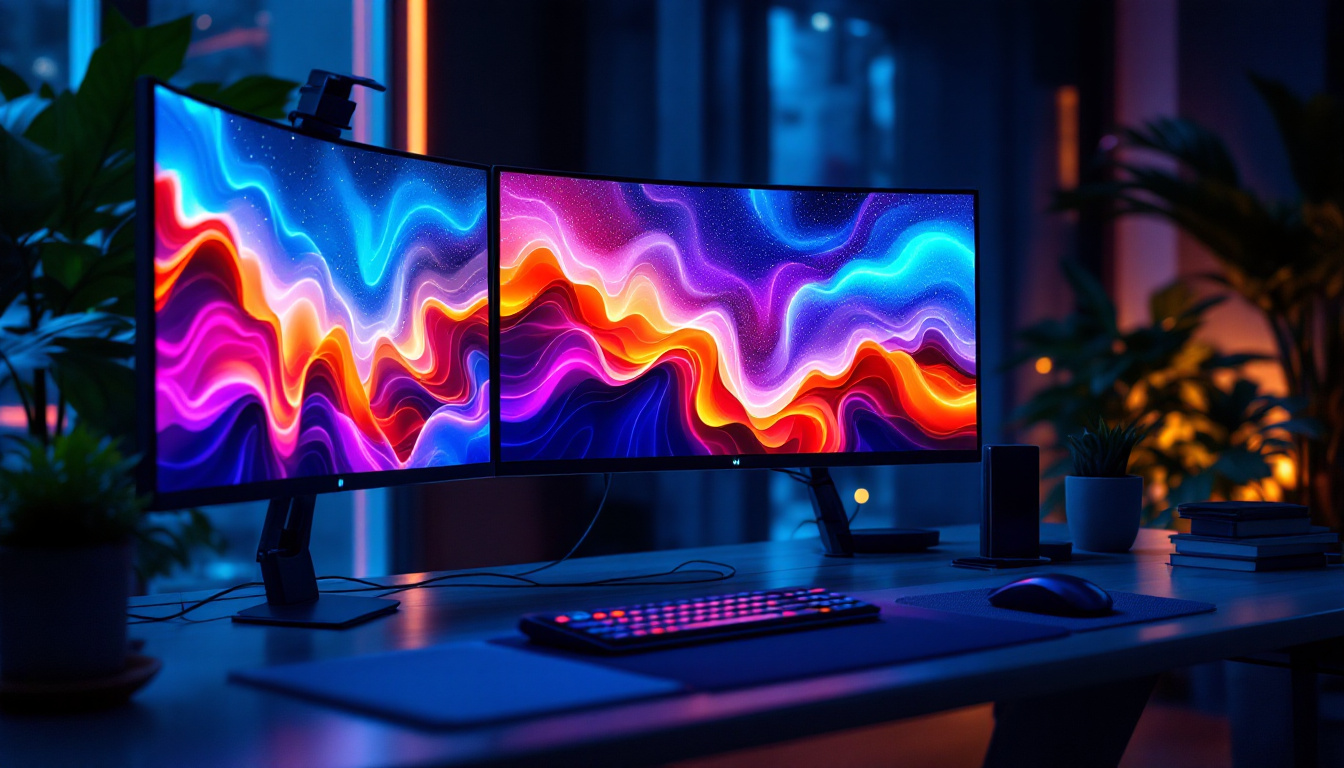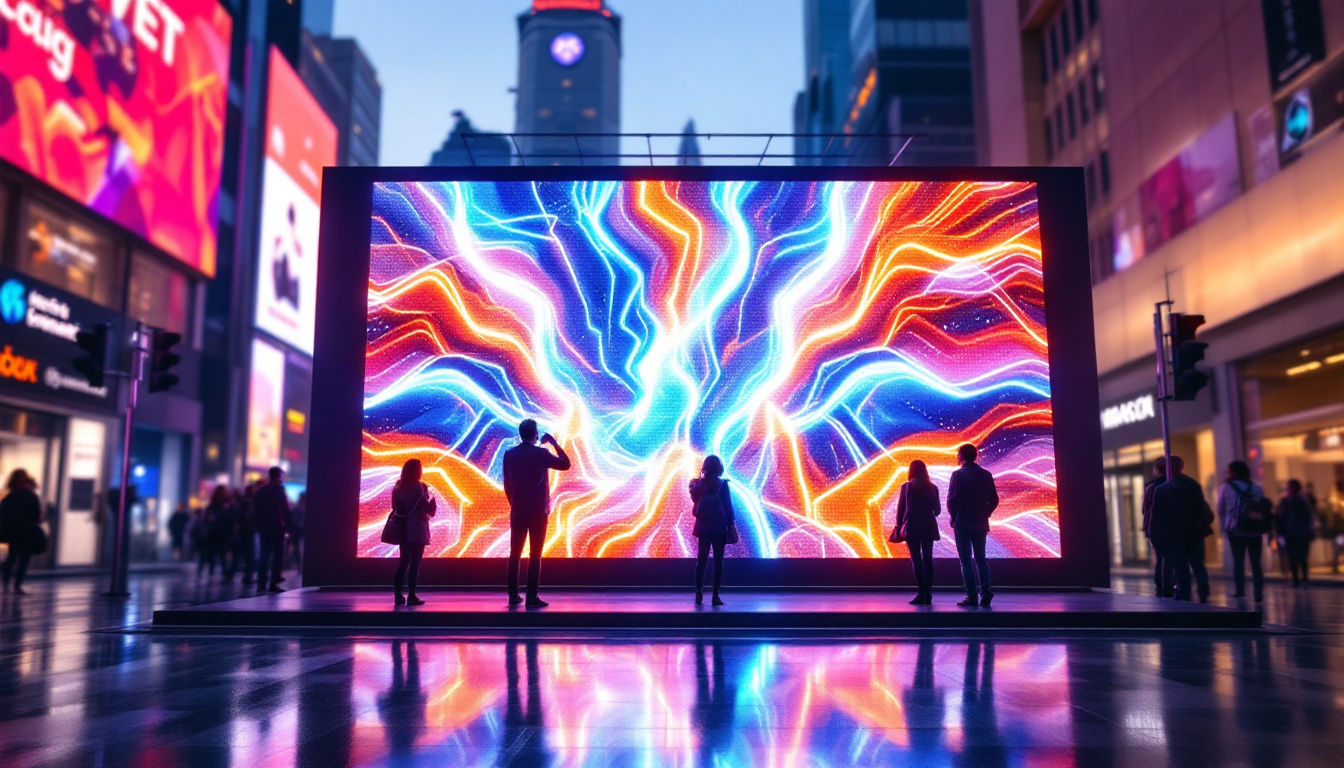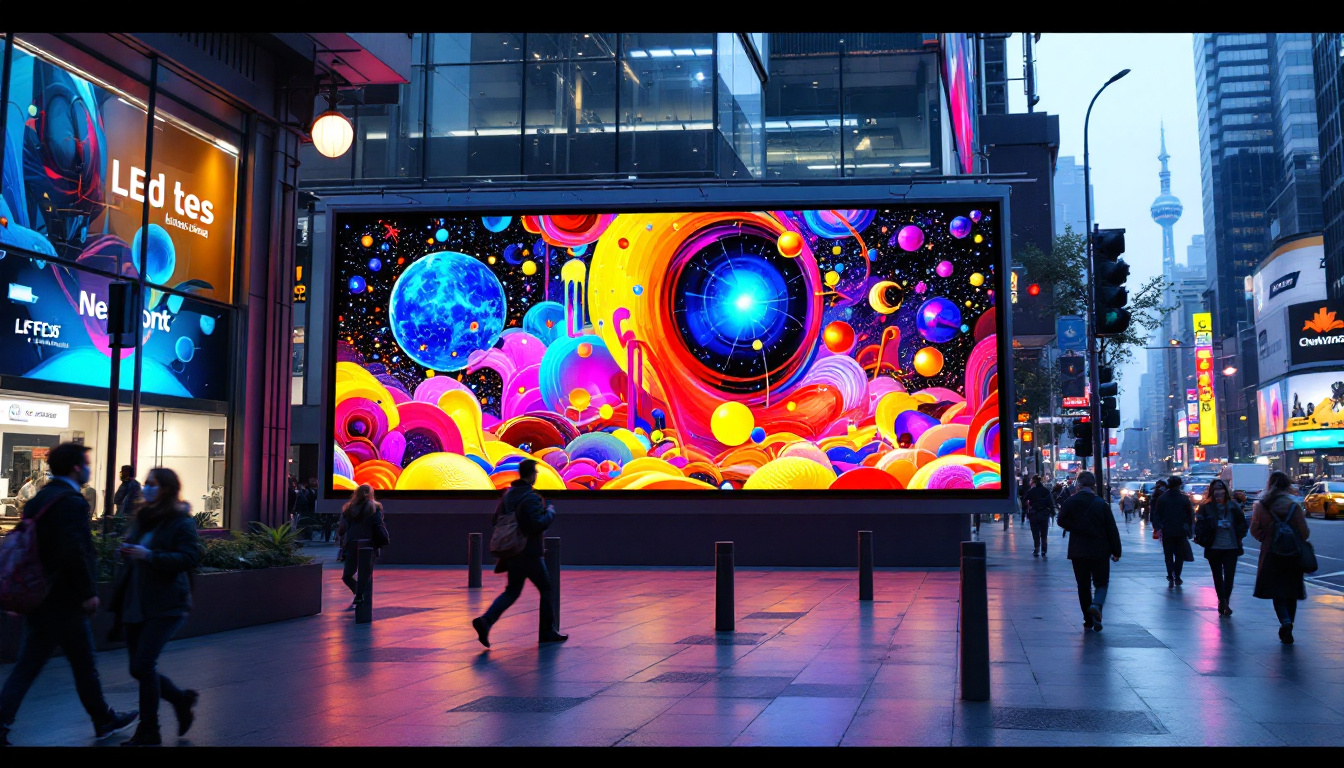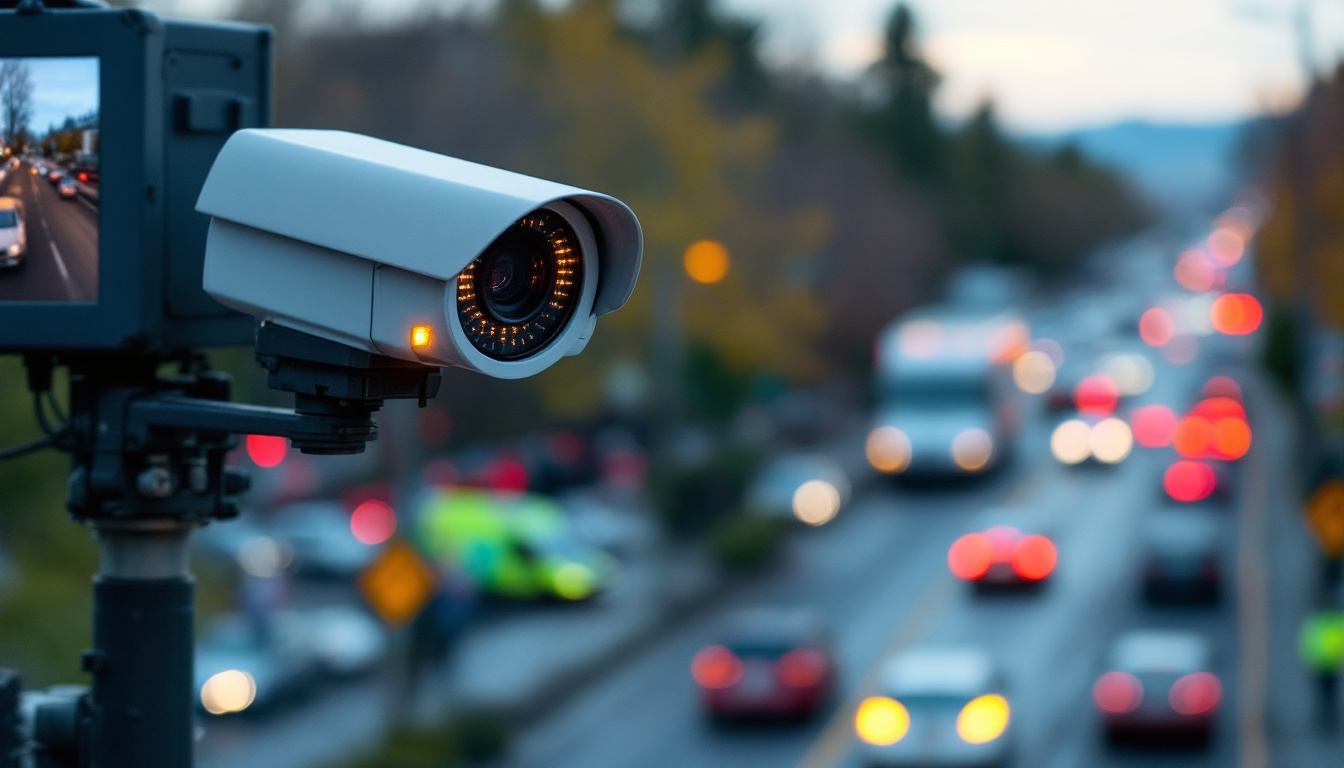In the modern world, visual communication has taken on a new dimension, thanks in large part to advancements in display technology. Among the most prominent innovations is the LED display, which has transformed how information is presented across various industries. This article delves into the intricacies of LED displays, exploring their functionality, applications, and advantages.
Understanding LED Technology
Light Emitting Diodes (LEDs) are semiconductor devices that emit light when an electric current passes through them. This fundamental principle is the backbone of LED displays, which have become ubiquitous in our daily lives. From billboards to television screens, the versatility of LED technology is evident. The rapid advancement in LED technology has not only transformed the way we consume visual media but has also led to significant energy savings and reduced environmental impact compared to traditional lighting solutions.
How LEDs Work
At the core of an LED display are tiny diodes that produce light. When electricity flows through these diodes, they emit photons, which create visible light. The color of the light emitted depends on the materials used in the diode. By combining different colors, LEDs can produce a full spectrum of hues, allowing for vibrant and dynamic visuals. This ability to mix colors is particularly advantageous in applications like digital signage, where eye-catching displays are essential for attracting attention.
LED displays typically consist of an array of these diodes arranged in a grid. Each pixel is made up of multiple diodes, usually red, green, and blue (RGB), which can be adjusted in intensity to create various colors. This pixel-based structure is what enables LED displays to present detailed images and videos. Furthermore, the rapid response time of LEDs allows for smooth transitions and animations, making them ideal for high-speed applications such as sports broadcasting and live events.
Types of LED Displays
LED displays come in various forms, each suited for different applications. The most common types include:
- Direct View LED Displays: These displays are made up of individual LEDs that are visible to the viewer. They are often used in large outdoor screens and digital billboards. Their high brightness levels make them perfect for visibility in direct sunlight, ensuring that advertisements and information can be seen clearly at any time of day.
- LED Backlit Displays: Common in televisions and computer monitors, these displays use LEDs to backlight an LCD panel, enhancing brightness and color accuracy. This technology allows for thinner designs and improved energy efficiency, making it a popular choice for modern consumer electronics.
- Organic LED (OLED) Displays: OLED technology uses organic compounds to emit light, allowing for thinner screens and better contrast ratios. They are popular in high-end televisions and smartphones. The self-emissive nature of OLEDs means that they can achieve true blacks by turning off individual pixels, resulting in an unparalleled viewing experience.
In addition to these common types, there are also specialized LED displays designed for specific uses, such as transparent LED screens that allow for unique advertising opportunities in retail environments. These innovative displays can blend seamlessly with their surroundings, providing a futuristic aesthetic while still delivering vibrant content. Moreover, advancements in flexible LED technology are paving the way for curved and bendable screens, which can adapt to various applications, from wearable devices to architectural installations, further showcasing the limitless potential of LED technology.
Applications of LED Displays
The versatility of LED displays has led to their adoption across a wide range of industries. Their ability to deliver high-quality visuals makes them ideal for various applications.
Advertising and Marketing
One of the most prominent uses of LED displays is in advertising. Businesses leverage the eye-catching nature of these displays to attract customers. Digital billboards, for instance, can showcase dynamic advertisements that change throughout the day, capturing the attention of passersby.
Moreover, LED displays allow for targeted marketing strategies. Advertisers can display specific messages based on the time of day or audience demographics, making their campaigns more effective and engaging. This adaptability not only maximizes visibility but also enhances customer interaction, as potential buyers are more likely to respond to personalized content. The integration of social media feeds into these displays further amplifies engagement, allowing brands to showcase user-generated content and real-time promotions, creating a vibrant dialogue between the business and its audience.
Entertainment and Events
In the entertainment industry, LED displays have revolutionized how audiences experience live events. Concerts, sports games, and theater productions often utilize large LED screens to enhance the visual experience. These displays can provide close-up shots of performers, display graphics, and even serve as backdrops for stage settings.
Additionally, LED technology is pivotal in theme parks and attractions, where immersive experiences are created through stunning visuals and synchronized lighting effects. The use of LED displays in these environments not only captivates visitors but also enhances storytelling, allowing for a more engaging narrative that can transport audiences into fantastical realms. Furthermore, the flexibility of LED technology enables event organizers to create bespoke experiences tailored to specific themes or occasions, making each event unique and memorable.
Transportation and Public Information
LED displays play a crucial role in transportation systems, providing real-time information to commuters. Train and bus stations often use LED screens to display arrival and departure times, helping passengers stay informed.
Furthermore, LED displays are employed in traffic management, where they can convey important messages to drivers, such as road conditions, speed limits, and detours. This enhances safety and efficiency on the roads. In addition to these functionalities, LED displays are increasingly being integrated into smart city initiatives, where they contribute to a more connected urban environment. For instance, they can be used to relay emergency alerts or public service announcements, ensuring that crucial information reaches citizens promptly. As cities evolve, the role of LED displays in enhancing public safety and urban navigation continues to grow, making them an indispensable tool in modern infrastructure development.
Advantages of LED Displays
The growing popularity of LED displays can be attributed to several advantages they offer over traditional display technologies.
Energy Efficiency
One of the most significant benefits of LED displays is their energy efficiency. Compared to older technologies like incandescent bulbs or even traditional LCDs, LEDs consume significantly less power. This not only reduces operational costs but also contributes to a lower carbon footprint, making them an environmentally friendly option.
Additionally, energy-efficient displays can operate longer without the need for frequent replacements, further enhancing their cost-effectiveness.
Brightness and Visibility
LED displays are known for their exceptional brightness, making them suitable for both indoor and outdoor environments. Their ability to produce vivid colors and high contrast ratios ensures that visuals remain clear and engaging, even in direct sunlight.
This characteristic is particularly advantageous for outdoor advertising and public displays, where visibility is crucial for capturing the attention of a large audience.
Longevity and Durability
Another notable advantage of LED displays is their longevity. LED technology is designed to withstand harsh conditions, making these displays more durable than traditional options. They are resistant to shock, vibration, and temperature fluctuations, which is essential for outdoor installations.
Furthermore, LED displays typically have a longer lifespan, often lasting up to 100,000 hours or more, which translates to years of reliable performance.
Challenges and Considerations
Despite their many advantages, LED displays are not without challenges. Understanding these considerations is essential for businesses and organizations looking to invest in this technology.
Initial Cost
One of the primary challenges associated with LED displays is the initial investment. While prices have decreased over the years, high-quality LED displays can still be expensive compared to traditional display technologies. This upfront cost can deter some businesses from making the switch.
However, it is crucial to consider the long-term savings associated with energy efficiency and reduced maintenance costs, which can offset the initial expenditure over time.
Content Management
Another consideration is the need for effective content management. LED displays require regular updates and maintenance to ensure that the content remains relevant and engaging. This necessitates a dedicated team or software solutions to manage the display’s content effectively.
Additionally, the quality of the content displayed is paramount. Poorly designed graphics or videos can detract from the overall impact of the display, underscoring the importance of investing in quality content creation.
The Future of LED Displays
The future of LED display technology looks promising, with ongoing advancements poised to enhance their capabilities further. Innovations in areas such as flexible displays, improved resolution, and integration with smart technologies are on the horizon.
Flexible and Transparent Displays
One of the most exciting developments in LED technology is the emergence of flexible and transparent displays. These innovations allow for new design possibilities, enabling displays to be integrated into various surfaces and environments.
For instance, transparent LED displays can be used in retail settings to create captivating window displays that allow customers to see products while also showcasing dynamic content. Flexible displays can be bent and shaped, opening up new avenues for creative installations.
Integration with Smart Technologies
As smart technology continues to evolve, LED displays are increasingly being integrated into smart systems. This integration allows for real-time data sharing, interactivity, and enhanced user experiences. For example, LED displays can be connected to social media feeds, allowing for live updates and engagement with audiences.
Furthermore, the combination of LED displays with augmented reality (AR) and virtual reality (VR) technologies is set to redefine how information is presented and consumed, creating immersive experiences that captivate audiences.
Conclusion
LED displays have undoubtedly transformed the landscape of visual communication. Their energy efficiency, brightness, and versatility make them a preferred choice for a wide range of applications, from advertising to entertainment and public information.
While challenges such as initial costs and content management exist, the long-term benefits and continuous advancements in technology position LED displays as a cornerstone of modern communication. As innovations continue to emerge, the potential for LED displays is boundless, promising exciting developments in the years to come.
In a world where visual impact is paramount, LED displays stand out as a powerful tool for engaging audiences and conveying messages effectively. Embracing this technology is not just a trend; it is a strategic move towards a brighter, more visually engaging future.
Explore the Future of Visual Communication with LumenMatrix
As you consider the transformative power of LED displays, LumenMatrix invites you to experience the pinnacle of display technology. Our innovative solutions, ranging from Indoor and Outdoor LED Wall Displays to specialized options like Vehicle LED Displays and LED Sports Displays, are designed to captivate and engage. With LumenMatrix, you’re not just getting a display; you’re embracing a future where your message shines with unparalleled clarity. Check out LumenMatrix LED Display Solutions today and step into a world of vivid, energy-efficient, and dynamic visual possibilities.

